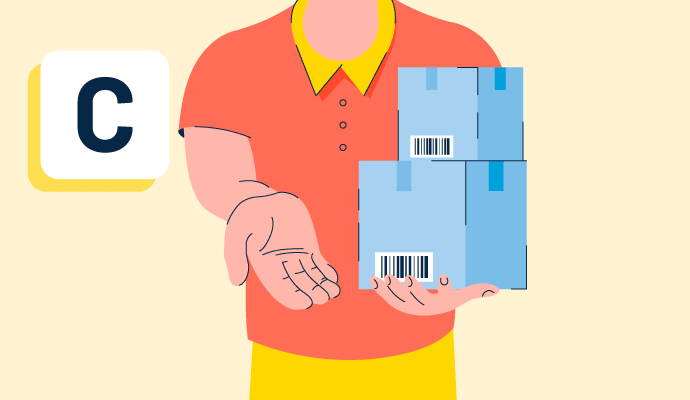What is cash on delivery?
Cash on delivery (COD) means customers pay for an item when it arrives at their home or business. During the e-commerce checkout process, the customer selects COD instead of paying via credit card or other electronic methods.
The customer receives an invoice, and the company delivers the item via delivery service. The customer must provide payment when the shipment arrives. Most delivery services accept cash and check, but some also take debit and credit cards.
Cash on delivery is especially popular in India, Southeast Asia, and the Middle East. This concept is useful when segments of the population don’t have bank accounts or if there is a general distrust of online payment.
Shipping software helps sellers find couriers and delivery services to use for COD services worldwide. Retailers can track their packages at all stages of the shipping process and create integrations with various e-commerce sites and payment methods.
Cash on delivery examples
When making online purchases, many consumers assume they need to pay during checkout. However, there are many examples of business-to-consumer (B2C) and business-to-business (B2B) companies offering a cash on delivery option.
In the B2C world, customers often pay upon receipt when ordering pizza or dry cleaning. With regards to B2B, an auto parts wholesaler might offer this option to a retailer.
Benefits of cash on delivery
Retailers can often integrate cash on delivery into their existing payment systems, offering it alongside methods such as credit cards, debit cards, bank transfers, and digital wallet payments. By adding the COD option, companies notice advantages such as:
- Extended customer reach. In developing countries, many potential consumers don’t have bank accounts. For those who do, the accounts may not be optimized for online or mobile banking. Buying from e-commerce retailers presents a real challenge. If a retailer offers cash on delivery, a customer can bypass entering debit or credit information and instead check the COD box. This opens up an entire demographic for companies looking for increased market share.
- Increased order completion. One metric online retailers track is cart abandonment rate, which is the percentage of items customers put in their carts only to leave behind before the checkout process. Often customers abandon their cart because they don’t want to spend money right away or go through the extra steps of payment. COD alleviates both concerns, helping increase the order completion rate.
- Improved trust. Some customers hesitate before entering credit card or bank information into an unfamiliar website or app. Offering a pay upon delivery option allows them an alternative way to order and helps them gradually develop trust in the company.
- Shorter payment cycles. B2B companies often offer Net 15, 30, or 60 terms, allowing a much longer window for payment. But with cash on delivery, the customer pays as soon as the product is delivered. This shorter payment window makes it easier for companies to manage cash flow.
Cash on delivery best practices
When using cash on delivery as a payment option, e-commerce stores should look for ways to improve trust and mitigate risk. Some best practices companies should follow:
- Find a trustworthy delivery partner. A quality logistics partner is crucial for two reasons. First, the courier or delivery person is the in-person customer contact point, and offering friendly and professional service can boost retention rates. Second, the courier is responsible for collecting and reporting payments. Retailers should discuss rates with the logistics partner and ensure a legally binding contract is in place.
- Track customer behavior. One of the potential downsides of COD is paying to deliver an item and then discovering the client cannot provide payment. Ask the courier or delivery partner to keep track of any delayed or rejected deliveries. Analyze patterns and flag accounts that are costing the company time and money. Only offer COD to customers with positive payment histories.
- Communicate effectively. Delivery dates sometimes change due to inclement weather, manufacturing delays, or other unavoidable complications. Communicate these delays with clients via text message, email, or other agreed-upon platforms. This communication gets customers ready to receive goods and improves a company’s reputation and trust.

Kelly Fiorini
Kelly Fiorini is a freelance writer for G2. After ten years as a teacher, Kelly now creates content for mostly B2B SaaS clients. In her free time, she’s usually reading, spilling coffee, walking her dogs, and trying to keep her plants alive. Kelly received her Bachelor of Arts in English from the University of Notre Dame and her Master of Arts in Teaching from the University of Louisville.

